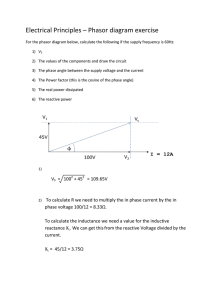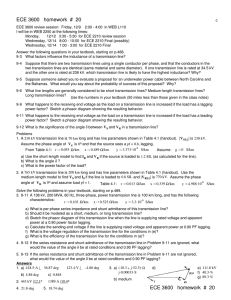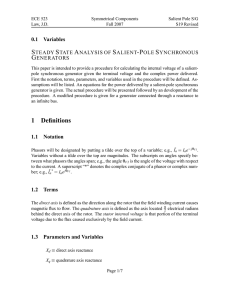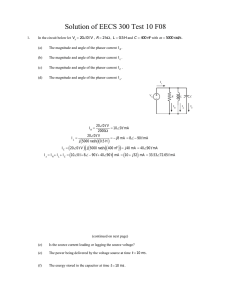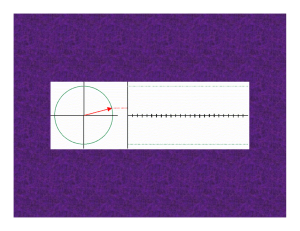We have a circuit with four elements, and we want... Kirchoff’s Voltage Law.
advertisement
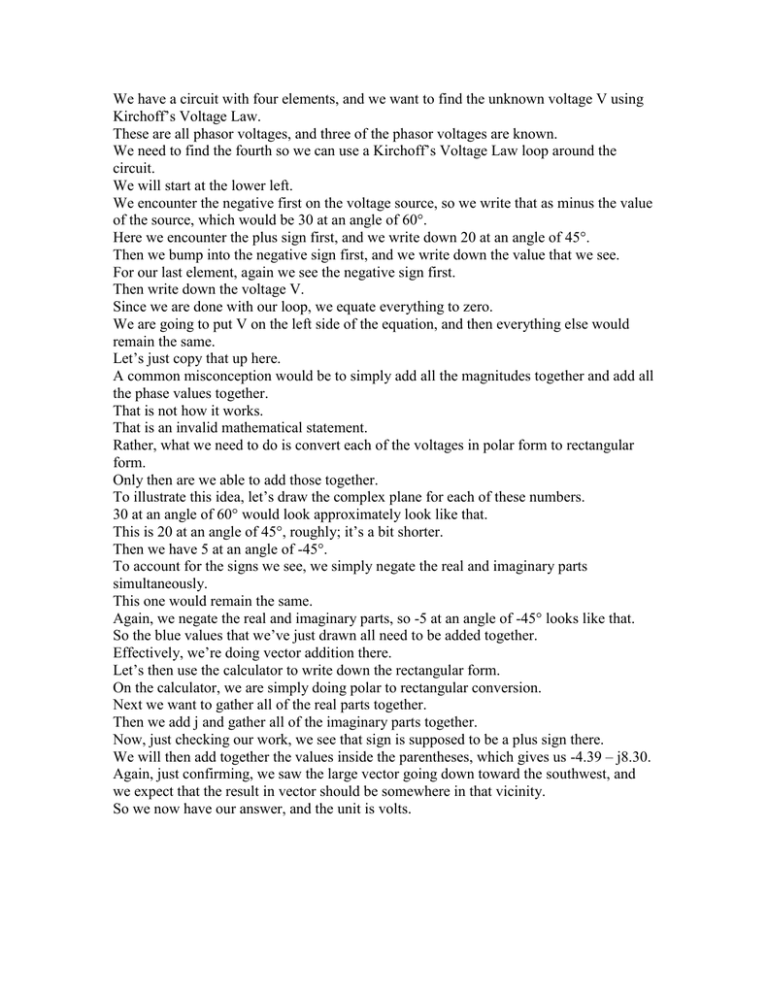
We have a circuit with four elements, and we want to find the unknown voltage V using Kirchoff’s Voltage Law. These are all phasor voltages, and three of the phasor voltages are known. We need to find the fourth so we can use a Kirchoff’s Voltage Law loop around the circuit. We will start at the lower left. We encounter the negative first on the voltage source, so we write that as minus the value of the source, which would be 30 at an angle of 60°. Here we encounter the plus sign first, and we write down 20 at an angle of 45°. Then we bump into the negative sign first, and we write down the value that we see. For our last element, again we see the negative sign first. Then write down the voltage V. Since we are done with our loop, we equate everything to zero. We are going to put V on the left side of the equation, and then everything else would remain the same. Let’s just copy that up here. A common misconception would be to simply add all the magnitudes together and add all the phase values together. That is not how it works. That is an invalid mathematical statement. Rather, what we need to do is convert each of the voltages in polar form to rectangular form. Only then are we able to add those together. To illustrate this idea, let’s draw the complex plane for each of these numbers. 30 at an angle of 60° would look approximately look like that. This is 20 at an angle of 45°, roughly; it’s a bit shorter. Then we have 5 at an angle of -45°. To account for the signs we see, we simply negate the real and imaginary parts simultaneously. This one would remain the same. Again, we negate the real and imaginary parts, so -5 at an angle of -45° looks like that. So the blue values that we’ve just drawn all need to be added together. Effectively, we’re doing vector addition there. Let’s then use the calculator to write down the rectangular form. On the calculator, we are simply doing polar to rectangular conversion. Next we want to gather all of the real parts together. Then we add j and gather all of the imaginary parts together. Now, just checking our work, we see that sign is supposed to be a plus sign there. We will then add together the values inside the parentheses, which gives us -4.39 – j8.30. Again, just confirming, we saw the large vector going down toward the southwest, and we expect that the result in vector should be somewhere in that vicinity. So we now have our answer, and the unit is volts.
